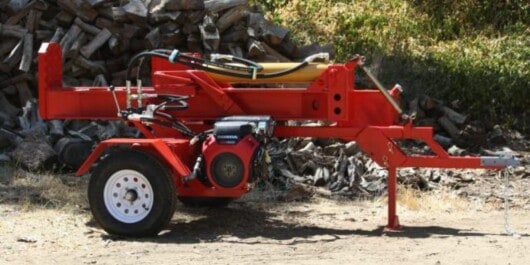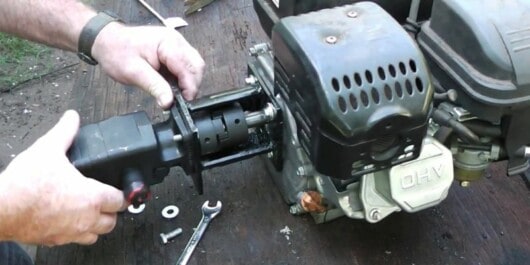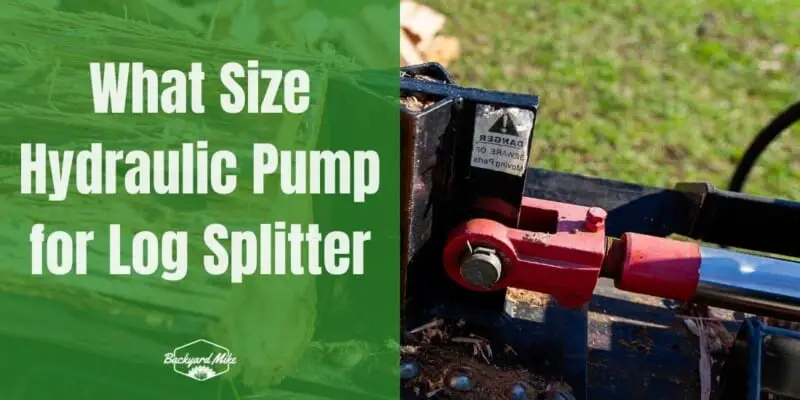Are you a homeowner looking to get a new log splitter, but don’t know what size of hydraulic pump you should go for? If so, then you are in the right place, as you’ll get to find that out here.
The size hydraulic pump for log splitter that you should go for will vary between ¾ or smaller pump and 1½ or smaller pump depending on the horsepower of your log splitter. Pumps having higher power will be able to split logs more quickly, while the type of hydraulic fluid and the size of logs you’re cutting will also play a role. The pumps available in the market will be based on Gallons Per Minute value, the higher the GPM the smaller will be the hydraulic pump.
In this article, you’ll get to know more about hydraulic pumps, what size hydraulic pump for log splitter, how to determine the horsepower needed for splitting logs, why do you need hydraulic pump for splitting logs, and more. Continue reading to know more about the answers that you’re looking for.
What is a log splitter hydraulic pump?
A hydraulic pump is an engine that makes use of pressurized fluid for powering the log splitter. When it comes to splitting logs, a hydraulic pump will be essential to move the logs around the splitter. There are some factors to consider when you’re purchasing a hydraulic pump, like the horsepower requirement and the size of the log splitter.
To help you get started, you’ll first have to figure out what horsepower your log splitter requires. It can be found on the manufacturer’s site or in the product specifications. After that, you’ll have to determine the size of the pump that will fit into your log splitter. Hydraulic pumps come in different sizes depending on their horsepower rating. Log splitter pumps are a vital element to a log splitter. Choosing the right type of hydraulic pump for log splitter will be important. The best way of doing that would be by choosing quality materials and the right size for the log splitter pump. It’ll help you ensure effectiveness and high efficiency.
Before making the decision, you should analyze accordingly depending on your log splitter and needs. The size of your log splitter pump will influence not just the performance, but the cost as well. Once you know what size hydraulic pump do I need for a log splitter and the horsepower requirement, you’ll be able to start shopping for the hydraulic pump. You should try and look for a reputable supplier who offers high-quality pumps at competitive rates. If possible, you should test-drive different pumps before you make your purchase.
Why do you require a hydraulic log splitter pump?
A hydraulic log splitter pump will be required for splitting logs. The pump will recirculate the water through the log and then separate the chips from the lumber. Choosing a hydraulic pump that is too large will likely result in increased power or efficiency. Conversely, if you choose a pump that’s too small might result in decreased performance. The general rule of thumb would be to select a pump that has at least 2x the horsepower of your log splitter. Additionally, choose a pump with an appropriate displacement.
Lastly, consider the location where you intend on using the log splitter. Pumps with higher capacity will generally be more efficient when used on uneven areas.
If you’re in the market for a hydraulic pump for your log splitter, there are a couple of things that you must consider. First, you’ll have to know the horsepower of the log splitter that you intend to buy. Secondly, you’ll have to decide the size that fits your needs. Here are a few guidelines to help you get started –
- For log splitters with 1-10HP, a 3/4 hydraulic pump will work fine
- For log splitters with 10-30 HP, a 1-hydraulic pump is recommended
- For log splitters with over 30 HP, a 1½ hydraulic pump is recommended
How to determine the horsepower needed for your log splitter?
There are certain things that you’ll need to determine if you want to figure out what size of hydraulic pump you’ll need in your log splitter. Here are some of them –
- The horsepower needed for the log splitter
- The dimensions of your log splitter
- The exact installation dimensions of the log splitter
- The type of wood and logs you’ll be splitting
- The type of hydraulic fluid you’ll be using for splitting
Once you’ve got all the variables, it’ll be possible to calculate the needed horsepower for your log splitter by using one of the many formulae available online. Once you’ve determined the horsepower, it’ll be easy to get a compatible hydraulic pump by performing a search on the internet or by calling the manufacturers directly.

Importance of the size of log splitter pumps
When you’re looking at log splitters and hydraulic pump options, you should also consider the size of the log splitter pumps. What is the need to be bothered about the size of your log splitter pumps? That is because the size will affect the splitting force and speed.
The bigger the size of the log splitter pump, the bigger will be the splitting force of the log splitter. This will help you in the useful splitting of more extensive wood and logs. However, with the increase in the size of the hydraulic pump, it’ll also require much more hydraulic fluid. The requirement for more fluid will decrease the speed.
It’s essential to choose the right size of the log splitter pump. For choosing the best and correct size of the log splitter, you’ll have to decide whether to improve the splitting force or pump speed. There are different sizes of hydraulic pumps available in the market depending on your requirement.
Hydraulic pumps available in the market are based on Gallons Per Minute or GPM. The higher the GPM value, the smaller will be the cylinder. The splitting force will depend on the cylinder. Meanwhile, the higher the GPM value, the smaller will be the splitting force. To make things more transparent, here are some of the commonly used sizes.
- 11 GPM hydraulic pump will take 7.09 seconds
- 13 GPM hydraulic pump will take 6 seconds
- 16 GPM hydraulic pump will take 4.875 seconds
- 22 GPM hydraulic pump will take 3.545 seconds
Can you design and make log splitters at home?
There are numerous leading manufacturers of hydraulic log splitters, and you cannot go wrong with any of them. This means you can either buy a log splitter from these brands or take the DIY route.
If you want to make a log splitter with a hydraulic pump installed, it is possible, You’ll need the calculations needed for designing, techniques, and parts required for making a log splitter at home. You should only go for the DIY route if you’re well-versed with machinery and know about the ins and outs of log splitters.

The engine of a log splitter will work on the basics of hydraulics. The hydraulic pump can create the driving force, while the hydraulic cylinder will work in unison with the valves to influence splitting power and speed. Oil tanks are essential for storing oil.
The engine used should be around 6-7 Horsepower. You’ll need a two-stage hydraulic pump (about 3000 PSI) to be employed with 11 GPM. It can be a standard hydraulic cylinder of 4-inch diameter with 24-inch length/height, with almost 10-12 gallon capacity of the oil tank. If you’re looking to play around with the values, you should choose the best one according to the requirements. To achieve that, you should use the calculator tool by International Hydraulics.
Conclusion
Thank you for reading. Hopefully, now you know a lot more about hydraulic pumps, what size hydraulic pump for log splitter, how to determine the horsepower needed for splitting logs, why do you need hydraulic pump for splitting logs, and more. The size of the hydraulic pumps that you should go for will vary between ¾ HP or smaller pump and 1½ HP or smaller pump, depending on the horsepower of your log splitter. Pumps having higher power will be able to split logs more quickly, while the type of hydraulic fluid and the size of logs you’re cutting will also play a role. The pumps available in the market will be based on Gallons Per Minute value, the higher the GPM the smaller will be the hydraulic pump.


